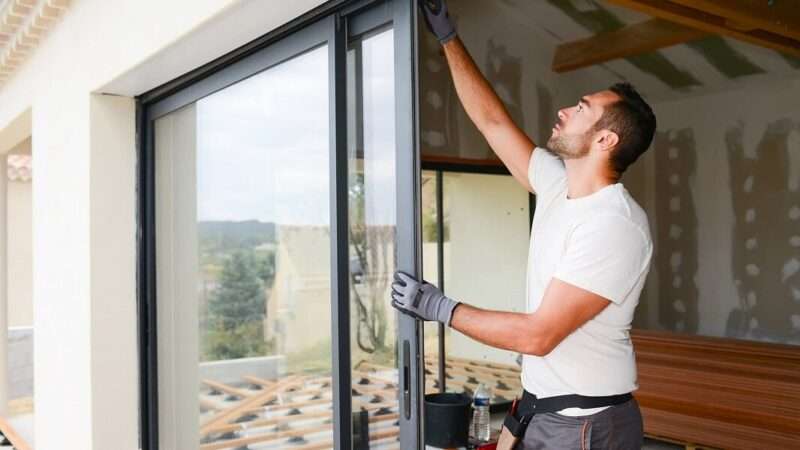Protecting Your Health: How to Prevent Your Home from Making You Sick

Your home should be a sanctuary, a place where you feel safe and comfortable. However, it can also be a source of health problems if not properly maintained. From allergens to mold, and from poor air quality to harmful chemicals, various factors can contribute to making your home an unhealthy place. This guide will help you understand how to prevent your home from making you sick and ensure a healthier living environment for you and your family.
Understanding the Risks in Your Home
Common Indoor Pollutants
Indoor pollutants can significantly affect your health. Some common indoor pollutants include:
- Dust Mites: These tiny creatures thrive in warm, humid environments and are a common cause of allergies and asthma.
- Mold and Mildew: Mold spores can cause respiratory issues, skin irritation, and other health problems.
- Pet Dander: Proteins found in pet saliva, urine, and dander can trigger allergies.
- Volatile Organic Compounds (VOCs): Found in many household products, VOCs can cause headaches, dizziness, and long-term health effects.
- Tobacco Smoke: Even secondhand smoke can have serious health consequences, including respiratory infections and cancer.
- Radon: A naturally occurring radioactive gas that can accumulate in homes and is the second leading cause of lung cancer.
Improving Air Quality
Ventilation
Proper ventilation is crucial for maintaining good indoor air quality. Ensure that your home is well-ventilated by:
- Opening Windows: Regularly open windows to allow fresh air to circulate and help remove indoor pollutants.
- Using Exhaust Fans: Install and use exhaust fans in kitchens and bathrooms to remove moisture and odors.
- Air Purifiers: Consider using air purifiers with HEPA filters to remove airborne particles, such as dust and pollen.
Humidity Control
Maintaining the right humidity level in your home is essential. High humidity can promote mold growth, while low humidity can cause dry skin and respiratory issues. Aim for a humidity level between 30-50% by:
- Using Dehumidifiers: In damp areas like basements, use dehumidifiers to reduce moisture levels.
- Proper Ventilation: Ensure that your home is well-ventilated to prevent moisture buildup.
- Fixing Leaks: Repair any leaks in your home promptly to prevent water damage and mold growth.
Reducing Allergens
Cleaning and Dusting
Regularly test your water quality to identify potential issues, and if you suspect mold-related health problems, consider CIRS Mold Investigations and Remediation for professional assessment and solutions.
- Vacuuming: Use a vacuum cleaner with a HEPA filter to remove dust and allergens from carpets and upholstery.
- Dusting: Use a damp cloth to dust surfaces to prevent dust from becoming airborne.
- Washing Bedding: Wash bedding and curtains regularly in hot water to kill dust mites.
- Decluttering: Reduce clutter to minimize dust accumulation.
Pet Care
If you have pets, take steps to minimize allergens:
- Regular Grooming: Brush and bathe your pets regularly to reduce dander.
- Pet-Free Zones: Create pet-free zones in your home, such as bedrooms, to reduce exposure to allergens.
- Cleaning: Clean pet bedding and toys frequently to remove allergens.
Preventing Mold and Mildew
Moisture Control
Controlling moisture is key to preventing mold and mildew growth:
- Fix Leaks: Repair any leaks in your roof, walls, or plumbing promptly.
- Use Exhaust Fans: Run exhaust fans in bathrooms and kitchens to remove moisture.
- Monitor Humidity: Use a hygrometer to monitor humidity levels and take action if they exceed 50%.
- Dry Wet Areas: Dry wet areas immediately, especially after spills or flooding.
Cleaning Mold
If you find mold in your home, take steps to clean it safely:
- Protect Yourself: Wear gloves, a mask, and goggles when cleaning mold.
- Use Proper Cleaning Solutions: Use a solution of water and detergent or a commercial mold cleaner to scrub moldy surfaces.
- Dispose of Contaminated Materials: Discard any materials that cannot be cleaned, such as carpets or drywall.
Minimizing Exposure to Harmful Chemicals
Safe Household Products
Many household products contain harmful chemicals that can affect your health. Choose safer alternatives:
- Natural Cleaners: Use natural cleaning products, such as vinegar and baking soda, instead of harsh chemicals.
- Non-Toxic Paints: Select low-VOC or no-VOC paints for your home.
- Avoid Synthetic Fragrances: Use essential oils or natural air fresheners instead of synthetic fragrances.
Proper Storage and Disposal
Store and dispose of household chemicals properly to minimize exposure:
- Secure Storage: Keep chemicals in their original containers and store them in a secure, well-ventilated area.
- Follow Instructions: Follow the manufacturer’s instructions for use and disposal.
- Dispose of Properly: Take unused or expired chemicals to a hazardous waste disposal site.
Ensuring Safe Drinking Water
Water Filtration
Contaminated drinking water can cause a range of health issues. Ensure safe drinking water by:
- Using Water Filters: Install water filters to remove contaminants, such as lead and chlorine, from your drinking water and Water softener installation is also recommended.
- Regular Maintenance: Replace filters according to the manufacturer’s instructions to maintain their effectiveness.
Testing Water Quality
Regularly test your water quality to identify potential issues:
- Home Testing Kits: Use home testing kits to check for common contaminants.
- Professional Testing: Consider professional testing for a comprehensive analysis of your water quality.
Last Note
By understanding the risks and taking proactive steps, you can prevent your home from making you sick. Focus on improving air quality, reducing allergens, controlling moisture, minimizing exposure to harmful chemicals, ensuring safe drinking water, and maintaining a clean and healthy living environment. With these measures, you can create a home that supports your well-being and enhances your quality of life.






